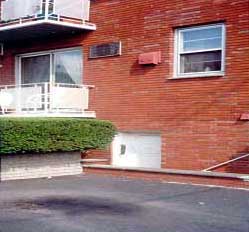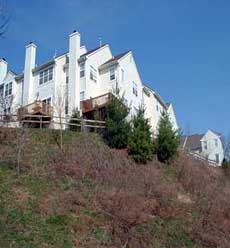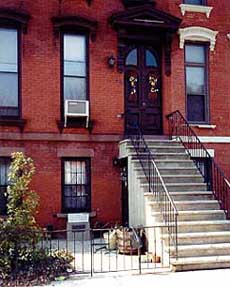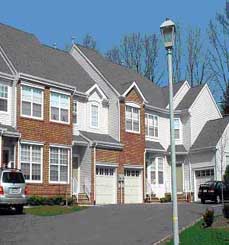“What floor are we on?”
Confusion on how to identify floors in a fire building is a more of a common concern than many of us realize. Buildings that are built on a grade, or buildings that present unique floor references due to terrain, have been around for longer than most of us have been in the business. What is often a common presence, but one that is given little attention, is the confusion that can develop with floor identification at a fire scene, most notably when dealing with residential structures. Building types, or specific geographical areas within your own city or town that present challenges in this area need to be addressed well before the receipt of an alarm. Complacency or ignorance with what seems like a simple identification could present critical challenges not only with scene management, but more importantly, with the need to rapidly deploy forces to a specific floor when a member calls for help.
Department policy or procedure must address grade/terrain identification. Responding and operating at a building that is two stories from the street/front side of the building with four floors that are accessible from grade in rear for the exact same building will present difficulties if not planned for.
Photo #1 ( 2 story, A-Side view
Photo #2 ( 4 story, C/D Side view of the same building)
To give you an example, view photos 1 and 2. If a member where to call for help indicating that he/she is trapped on the second floor, what floor would the member be on? Buildings that are built on a grade will present floor identification confusion for members if their view and entry point is limited to one or two sides of the structure.
In an attempt to eliminate this difficulty, departments use various procedures for identifying grade/terrain concerns. In one such department reviewed, members are instructed to invert the numerical floor references of the building in question when they are presented with a residential building that is built on a grade. Specifically, they start counting from the top down. As an example, if the building were two stories in the front and four stories in the rear, members would call the top floor the first floor and the bottom, or the lowest floor the fourth floor. The inverted floor reference would be used for the management of the incident. (see photos 1 and 2)
In another department, members are advised to numerically identify the floor from the lowest grade level regardless of side. Specifically, if the building has four floors accessible from the rear, and only two from the front, the building is identified as a four-story building regardless of what side or floor you entered from. (See photos 1 and 2)
In a more common approach, many departments require a floor/height size-up from the first arriving fire department officer that automatically dictates the operational height of the building. If the first arriving engine, ladder or chief officer indicates in his/her on-scene size-up report that they are arriving at a ” two-story, Class 5, residential,” not only does this size-up report indicate the construction and occupancy type, it also establishes the designated floor reference for the entire incident. The concept behind establishing the floor reference from the Command side of the building is based on the flow information to and from the Command side of the incident. If during the incident, more floors are identified other than what the command side has initially referenced, than the Incident Commander must immediately announce additional floor designations for that incident. If no information is relayed to the Incident Commander about additional floors within the building, or if no identification is established indicating any grade/accessibility concerns, then complacency will breed dangerous results.
In Jersey City, a Floor Identification Guide (FIG) is used for all residential buildings that present any challenges with floor or grade identification. If a building presents additional floors other than the command side of the address, or if the building has a court level that is below street grade, Incident Commanders are required to utilize the enclosed chart as an operational guide.
Residential Floor Identification GuideIdentification – Incident Commanders are to utilize the Command side of the incident to identify and designate the operational height of a residential building.
Grade Accessibility – If additional floors are accessible from grade on one or more sides of the building, individual floor references must follow the floor identification as designated from the Command Side of the incident.
Street grade vs. Court level – Members are to utilize street grade as the reference point for building floor identification. Court levels found in some of our Multiple Dwelling and Brownstone type occupancies are not be utilized as reference points with building floor identification.
First floor references – From the Command Side of the incident, any area that has more than half of its height above street level grade will be identified as the first floor.
Basement – From the Command side of the incident, any area that has more than half of its height below street grade will be identified as a Basement.
Quick Reference – If it appears close in consideration to a basement or first floor reference, and there is uncertainty with the identification, identify the area in question as the building’s first floor.
Cellar – From the Command side of the incident, any area that is entirely below grade will be identified as a Cellar.
Sub Cellar – From the Command side of the incident, any area below a cellar will be identified as a Sub cellar. Although it is rare within our residential housing, if there is any area found that is below a sub cellar, that area will be identified as Sub Cellar #1.
Responsibility – It shall be the responsibility of the Incident Commander to identify any additional or unusual floor references to all responding and operating units.
The residential floor guide utilized in Jersey City became a product of the need to identify the difficulties presented within our Brownstone inventory. Brownstones are buildings that are constructed of Class 3 design. Originally built and designed as a private dwelling, they often range in height from two to four stories with building widths averaging from 20 to 25 feet, and depths ranging from 40 to 60 feet. The uniqueness of these type buildings is not with the building’s height or square footage, it is more so with the building’s court entry level and how it can influence the designated height of the building.
Court entry levels found with Brownstone-type occupancies are patio-type areas that are actually a few steps down from the sidewalk or street level. Their depth below street grade can vary significantly from one side of the street to another. The original intent and design of the court level was to allow light and access to the partially below grade level of the home. When first built, this particular level of the home often served as the kitchen area for the home. Direct access to this floor space can still be found through a door under the building’s front steps (also referred to as a front stoop). Depending upon the court’s individual square footage, in early years they served as a gathering place for entertaining or relaxing in the outdoors. In the more recent years, many of those same areas serve as a collection point for garbage cans or discarded material. In either case, the floor space that is accessed from the sunken court needs to be identified and referenced. The residential floor guide allows for the identification. ( See photos #3 and #4)
Photo #3: More than ½ below street grade, refer to it as a basement.
Photo #4: More than ½ above street grade, refer to it as the first floor.
More modern residential occupancies can continue to present grade/terrain challenges.  Garden apartments due to their design and often placement within a sloped and landscaped setting, will present similar areas of concern. Terrace apartments are dwelling units that are partially below grade in the front or accessed side of the building. They get their name from the fact that although their entrance is partially below grade, the rear of the apartment is fully above grade exiting onto a patio from a sliding glass door. Depending upon the square footage and layout of this area, firefighters will often find a number of apartments sharing storage and laundry rooms within this space. (Photo # 5 Terrace Apt.)
Garden apartments due to their design and often placement within a sloped and landscaped setting, will present similar areas of concern. Terrace apartments are dwelling units that are partially below grade in the front or accessed side of the building. They get their name from the fact that although their entrance is partially below grade, the rear of the apartment is fully above grade exiting onto a patio from a sliding glass door. Depending upon the square footage and layout of this area, firefighters will often find a number of apartments sharing storage and laundry rooms within this space. (Photo # 5 Terrace Apt.)
Another more modern type of building that can present a challenge is the Townhouse. Townhouses, like the Garden apartment complex are often placed within a sloped terrain. The reasons for their design and placement within a sloped landscape some will say, is to take advantage of the ethics that the topography offers. The more realistic reason is that land that was not considered buildable a number of years ago due to its terrain, has now found its way on the tax roles as either a Garden Apartment or Townhouse complex. The immediate concerns from developments that present these challenges are not so much from the floor designation; your department’s floor identification guide should eliminate any difficulties. The main concern with be will accessibility, most notably for members of your ladder companies as they attempt to target and ladder bedroom areas.
|
|
 Photo #7: Rear of complex Photo #7: Rear of complex |
Regardless of the building type and its location within your town or city, the point that should be gathered from any grade/terrain concerns is, are you and your members prepared to identify, reference, and operate with the recognized challenges.
Stay Safe !
Michael A. Terpak
Deputy Chief, City of Jersey City





